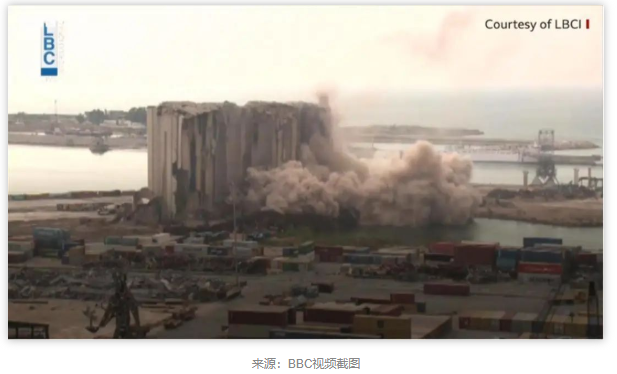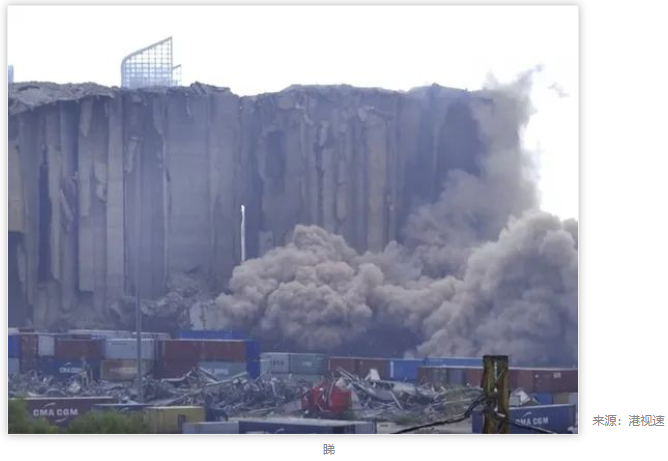According to the BBC, July 31, part of a large grain warehouse collapsed in the Lebanese port of Beirut on Sunday, just days before the second anniversary of the Beirut bombing. Dust from the collapse blanketed the city, reviving traumatic memories of the explosion that killed more than 200 people.

There are currently no reports of casualties.
It can be seen from the video that the right top of the large grain granary began to collapse, followed by the collapse of the right half of the entire building, causing huge smoke and dust.

The granary was badly damaged in the Lebanese explosion in 2020, when the Lebanese government ordered the demolition of the building, but it was opposed by the families of the victims of the explosion, who wanted to keep the building in memory of the explosion, so the demolition was planned. It has been put on hold so far.
Impressive! The most powerful non-nuclear explosion ever
Just before the second anniversary of the big bang, the granary suddenly collapsed, pulling people back to the thrilling scene two years ago.
On August 4, 2020, a huge explosion occurred in the Beirut port area. The explosion occurred twice in succession, causing damage to many houses and shattering glass. It was the most powerful non-nuclear explosion in history, killing more than 200 people, injuring more than 6,500, leaving hundreds of thousands homeless with damaged homes and $15 billion in damages.
According to Reuters, the explosion was caused by the mismanagement of chemicals by government departments. Since 2013, about 2,750 tons of flammable chemical ammonium nitrate have been stored in port warehouses, and the explosion may be related to improper storage of ammonium nitrate.
Agence France-Presse reported that the seismic wave generated by the explosion at that time was equivalent to a magnitude 3.3 earthquake, the port was razed to the ground, buildings within a radius of 100 meters from the explosion site were razed to the ground within 1 second, and buildings within a radius of 10 kilometers were all destroyed. , the airport 6 kilometers away was damaged, and both the Prime Minister’s Palace and the Presidential Palace were damaged.
After the incident, the current government was forced to resign.
The granary has been at risk of collapse for two years. Since July this year, Lebanon has continued to have high temperatures, and the remaining grains in the granary have fermented spontaneously for several weeks. Local officials said the building was at risk of complete collapse.
The grain granary was built in the 1960s and has a height of about 50 meters. It was once the largest granary in Lebanon. Its storage capacity is equivalent to the sum of imported wheat for one to two months.
Post time: Aug-03-2022





